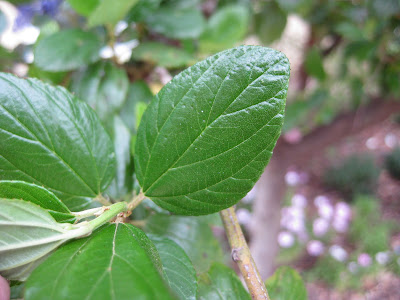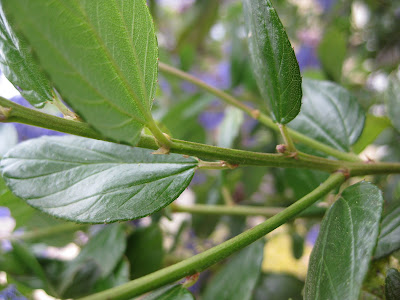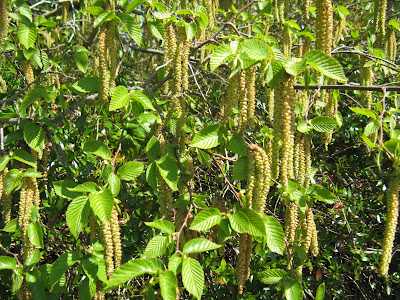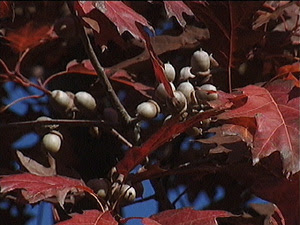The Box Elder is a small to medium sized deciduous tree native to CA and other areas in the US. Loally it can be found growing in riparian areas, generally as an understory tree. Very fast growing, to a fault actually, to 40-50' tall and as wide, usually with multiple stems forming a broadly spreading habit of mostly impenetrable stems and low hanging branches. Rarely cultivated except in North Dakota, sorry its an old joke. This is a grove in the Capitola village.
Leaves are opposite, pinnately compound with 3 - 5 leaflets. Leaves are 6-8" long, with 2-3" long leaflets. Leaflets are not symmetrical, in fact if you try to hold them together removing the space between the leaflets they look like a simple leaved maple. Lateral leaflets have a larger tooth or lobe on the outer edge while the terminal leaflet is larger and symmetrical with lobes of equal sizes.
Stems are thin, green with a distinctive waxy coating (glaucous bloom). You can see in the first picture how the wax has rubbed off.
Flowers are in long chains in early spring. Pretty and with interesting pinkish filaments holding the anthers.
Fruit are winged samaras, 1-1.5" long at about 60 degrees. Lots of fruit. Turn brown in winter and may be retained will into the following spring.
This is a newer more popular variegated cultivar 'Flamingo' with a reddish cast to the new growth in the spring.
Not sure why any of them are planted, and the variegated ones always have strong reversions of the variegated stems back to green which soon dominate the tree.
Misidentification:
Look at the opposite, pinnately compound leaves and its location, not likely planted.
Locations:
anywhere native riparian plants are found, along soquel creek, Aptos creek
This is a newer more popular variegated cultivar 'Flamingo' with a reddish cast to the new growth in the spring.
Misidentification:
Look at the opposite, pinnately compound leaves and its location, not likely planted.
Locations:
anywhere native riparian plants are found, along soquel creek, Aptos creek
Three poor variegated specimens are located on Soquel Drive at the intersection with Calabria St across from the fire station. (5/24/24 - Variegation almost gone.)


















































